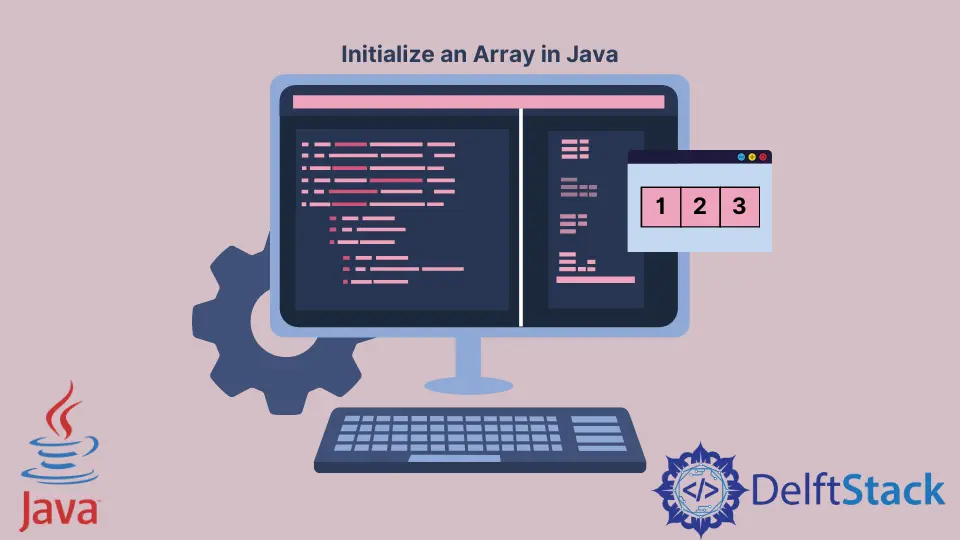如何在 Java 中初始化一个数组
Rupam Yadav
2023年10月12日
-
dataType arrayName[];来声明一个新的数组 -
arrayName = new dataType[size];来分配数组的大小 -
arrayName[index] = value/element用值/元素初始化数组 -
dataType[] arrayName = new dataType[]{elements}初始化数组

本文通过各种实例介绍了 Java 中如何声明和初始化一个数组。在 Java 中初始化一个数组有两种方法。
dataType arrayName[]; 来声明一个新的数组
最常见的语法是 dataType arrayName[];。
下面是一个声明一个数组的例子,这个数组将在其中存放 Integer 值。
public class Main {
public static void main(String[] args) {
int[] arrayInt;
}
}
arrayName = new dataType[size]; 来分配数组的大小
Java 中的数组可以容纳固定数量的元素,这些元素的类型是相同的。这意味着在初始化时必须指定数组的大小。当数组被初始化时,它被存储在一个共享内存中,其中的内存位置是根据数组的大小给予该数组的。
一个简单的例子可以更好地解释这个问题。
public class Main {
public static void main(String[] args) {
int[] arrayInt = new int[10];
System.out.println("The size of the array is: " + arrayInt.length);
}
}
在上面的例子中,
arrayInt 是一个被分配为 10 的数组。
必须使用 new 关键字来实例化一个数组。
输出显示了数组的总大小,但其中没有任何值。
输出:
The size of the array is: 10
arrayName[index] = value/element 用值/元素初始化数组
第一个初始化数组的方法是通过索引号来初始化要存储值的地方。
我们看一下这个例子就能理解清楚。
public class Main {
public static void main(String[] args) {
int[] arrayInt = new int[5];
arrayInt[0] = 10;
arrayInt[1] = 20;
arrayInt[2] = 30;
arrayInt[3] = 40;
arrayInt[4] = 50;
for (int i = 0; i < arrayInt.length; i++) {
System.out.println(arrayInt[i] + " is stored at index " + i);
}
}
}
输出:
10 is stored at index 0
20 is stored at index 1
30 is stored at index 2
40 is stored at index 3
50 is stored at index 4
dataType[] arrayName = new dataType[]{elements} 初始化数组
我们有另一种方法来初始化一个数组,同时在声明数组时直接存储数组元素。当数组的大小已经知道的时候,这种方法很有用,同时也让代码更加清晰易读。
下面是一个包含字符串值的数组的例子。
public class Main {
public static void main(String[] args) {
String[] arrayString = new String[] {"one", "two", "three", "four", "five"};
for (int i = 0; i < arrayInt.length; i++) {
System.out.println(arrayInt[i] + " is stored at index " + i);
}
}
}
输出:
one is stored at index 0
two is stored at index 1
three is stored at index 2
four is stored at index 3
five is stored at index 4
作者: Rupam Yadav
Rupam Saini is an android developer, who also works sometimes as a web developer., He likes to read books and write about various things.
LinkedIn